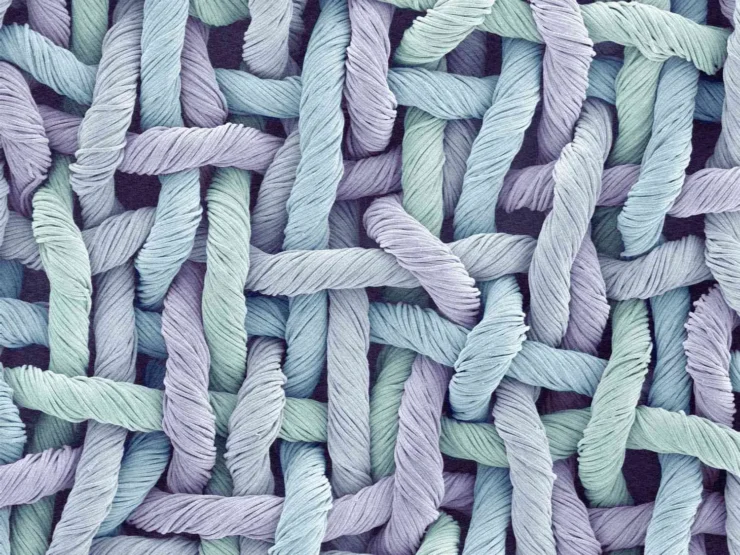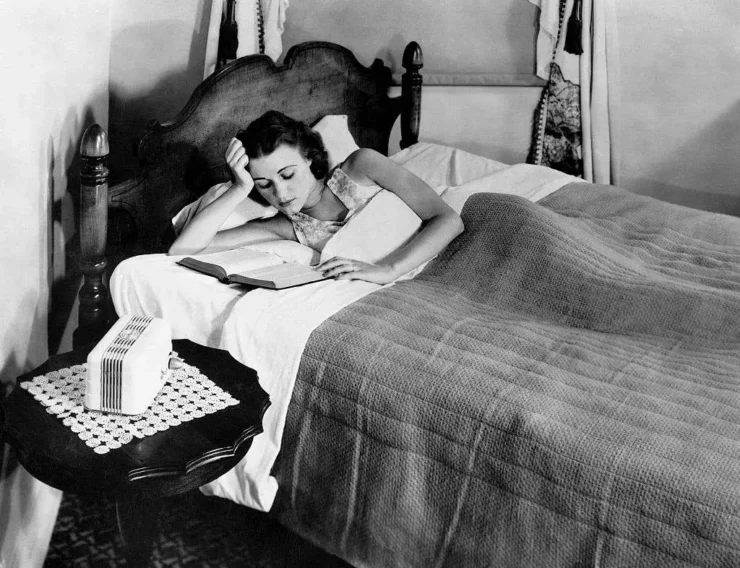Throughout history, blankets have been a source of comfort and protection for people from all walks of life. From ancient times to the present day, blankets have come in various shapes, sizes, and materials – each one reflecting the culture that developed it. In this article, we will explore how these simple pieces of fabric evolved to become an integral part of our lives today. From early civilizations such as the Egyptians who used linen cloths and animal skins for warmth during cold nights, to medieval Europe where woven woolen blanket designs were perfected through centuries-old weaving techniques; blankets have always been a necessity for survival.
During the Renaissance period, they became more decorative with intricate embroidery patterns being added to them. By using natural dyes from plants and minerals, artisans created bold colors that could not be achieved before due to limitations in technology. This fashion trend brought about a huge demand for these luxurious items amongst nobility throughout Europe – something that continues even today.
As technologies advanced so did fabrics used in making blankets; synthetic fibers like polyester were introduced into production allowing manufacturers more freedom when creating unique products for their clients worldwide. Today modern blanket industry is multifaceted with many different types available ranging from traditional cotton quilts to heated luxury throws made out of cashmere or alpaca wool – giving us endless options when looking for just the right one!
Ancient Civilizations’ Influence on Blankets
Throughout history, blankets have been essential items for civilizations all around the world. Ancient cultures used them for warmth and protection from the elements, while also using them as a symbol of status or wealth. While different materials were used in ancient times to create these blankets, their influence has been felt throughout centuries. The Incas are credited with popularizing the use of alpaca fibers for weaving warm and durable blankets that could withstand long trips over mountains and across valleys.
They crafted intricate patterns into these pieces to represent their culture’s mythology. The Mayans created vibrant-colored woolen blankets with complex designs woven into them, which they believed had healing properties when placed upon an ill person’s body. Meanwhile, in Europe during medieval times thick woolen blankets became iconic symbols of royalty and nobility due to their high cost at the time; only those with great wealth could afford such luxury items.
In Asia traditional hand-made quilts called Kantha were stitched together from old saris or other fabrics by women who wove stories about love, family life, and religion into its patchwork design; this art form is still practiced today in many parts of India and Bangladesh. In more recent years synthetic fabrics like acrylic have become widely available making it much easier to produce large batches of lightweight yet warm bedding relatively cheaply compared to earlier times when every blanket was handmade with natural fabrics like cotton or sheep’s wool requiring highly skilled artisans.
The current ubiquity of mass-produced blankets means that people can now find affordable options regardless if they desire something practical or simply want a decorative item for their home décor collection. All these examples show how influential ancient civilizations have been on blanket technology through the ages – what began as simple animal skins draped over bodies evolved into works of art containing deep symbolism that impacted generations afterward thanks to creative minds willing to push boundaries in crafting new materials out of existing ones.
Blanket Evolution during the Middle Ages

The Middle Ages marked a time of immense change for the evolution of blankets throughout history. During this era, blankets were made from more durable materials such as wool and cotton, which allowed them to be used in colder climates. Additionally, new weaving methods were developed that improved insulation and comfort levels compared to earlier centuries. This period also saw an increase in the variety of colors available for use on blankets.
Brightly-colored designs became popular among the nobility as a sign of wealth and prosperity; while simpler patterns featuring stripes or solid colors remained widely used amongst peasants due to their affordability and durability. Furthermore, double-layered weaves emerged during this time as well as providing greater protection against cold weather conditions without sacrificing breathability or comfort. Blankets continued to evolve through the Baroque period with unique shapes appearing across Europe including square or rectangular structures depending on region.
Weavers also began adding decorative elements such as embroidery, quilting stitches, fringe tassels, and other embellishments that further distinguished these items from previous generations’ creations. By the end of the Middle Ages, there was an impressive array of blanket styles being crafted throughout Europe – each one tailored specifically to their intended purpose whether it be warmth during winter months or purely decorative purposes year-round
The Spread of Wool and Cotton as Materials for Blankets
The spread of wool and cotton as materials for blankets has played a major role in the historical evolution of blankets through the ages. Wool was commonly used by many cultures to make clothing, bedding, and other textiles. Similarly, cotton was cultivated in ancient times in India and Egypt before its widespread use elsewhere around the world. In Europe, during the Medieval Times, woolen blankets were very popular due to their warmth and comfort qualities while being lightweight enough for easy transport.
Cotton eventually became more affordable as technology advanced which allowed it to become an increasingly common material for warmth-providing bedding like quilts and comforters throughout the 18th century. This made cotton a popular choice among people who wanted something warm yet not too heavy or bulky that could provide comfortable sleep on cold winter nights. In modern days both wool and cotton remain highly sought-after materials when it comes to making blankets with each having unique advantages over the other such as breathability or durability.
The Emergence of Synthetic Fabrics in the 20th Century

In the twentieth century, a breakthrough in fabric technology led to the emergence of synthetic fibers. This revolutionized the production of blankets and opened up new possibilities for their use. Synthetic materials provided more warmth than traditional woolen fabrics while being much lighter and easier to clean. Moreover, they were also more affordable and accessible than natural fibers like cotton or linen.
In addition, synthetics could be woven into intricate patterns that allowed for greater versatility in blanket design and construction compared to earlier models made from animal hair or plant-based fabrics. As a result of these advances, blankets became increasingly commonplace throughout households during this period as well as during subsequent decades when synthetic fiber production continued to improve upon existing technologies.
Modern Uses for Blankets
In modern times, blankets are incredibly versatile and can be used for a variety of purposes. One popular use is as an extra layer of warmth in the winter months, particularly during camping trips or outdoor excursions. Additionally, they make great throws to spruce up any living room or bedroom and provide warmth without having to turn on the heat! Blankets also make excellent gifts for family and friends. They come in a wide range of sizes, colors, styles, fabrics, and textures so you’re sure to find one that fits anyone’s tastes.
For added convenience, many stores now offer personalized blankets with names or initials embroidered onto them—perfect for special occasions such as weddings or birthdays. Moreover, weighted blankets have become increasingly popular over recent years; these are designed to reduce stress levels by providing calming pressure across the body like a gentle hug. Thus it’s clear that there are many modern uses for blankets beyond their traditional role in keeping us warm at night!
Conclusion

The history of blankets is a fascinating and varied one. From ancient Egypt to the modern day, blankets have been used for warmth, decoration, and comfort through the ages. In addition to providing practical features, blankets have also become a symbol of status in many societies throughout time.
Blankets have come to represent safety and security for those who use them as well as serve as markers of social standing, wealth, or power. Today’s blanket manufacturer offers an extensive range of fabrics and designs that ensure you can find the perfect blanket for any occasion or purpose. Whether it’s an ancient woven cloth or something more modern like a fleece throw from your favorite manufacturer – there is no doubt that blankets continue to be vital components in our lives both now & into the future.

